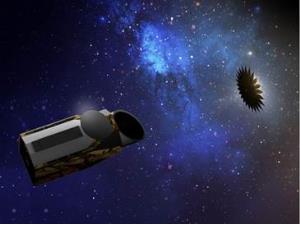



Date:30/12/19
 With environmental catastrophes befalling Earth and an increasing population, there’s an argument that for humanity to survive, we’ll need to find a new planet. NASA has proposed a telescope to do just that: The Habitable Exoplanet Observatory (HabEx) mission would search for a “second Earth” where humanity could eventually relocate.
With environmental catastrophes befalling Earth and an increasing population, there’s an argument that for humanity to survive, we’ll need to find a new planet. NASA has proposed a telescope to do just that: The Habitable Exoplanet Observatory (HabEx) mission would search for a “second Earth” where humanity could eventually relocate.
“Our goal is to see if we can find a planet that is similar to Earth — one that can support life,” Professor Scott Gaudi, a researcher at Ohio State University, said in a statement. “While we’ve identified a number of planets outside our solar system, so far, none have conclusively been shown to have the elements necessary for habitability. The HabEx mission would be the next logical step in the search for planets similar to our Earth.”
The HabEx would be a space telescope, similar to the Hubble Space Telescope, but with a mirror much larger than Hubble’s at 4 meters (13 feet) wide compared to 2.4 meters wide. It would also be equipped with an origami-like sunshade, a 52-meter-wide disk (170.6 feet) that would be folded into a tight spiral for launch before being deployed into a flower shape. This shade would block light from nearby stars, allowing the telescope to detect dimmer light from more distant stars, allowing it to see deeper into space.
NASA wants to launch a new space telescope to search for a second Earth
 With environmental catastrophes befalling Earth and an increasing population, there’s an argument that for humanity to survive, we’ll need to find a new planet. NASA has proposed a telescope to do just that: The Habitable Exoplanet Observatory (HabEx) mission would search for a “second Earth” where humanity could eventually relocate.
With environmental catastrophes befalling Earth and an increasing population, there’s an argument that for humanity to survive, we’ll need to find a new planet. NASA has proposed a telescope to do just that: The Habitable Exoplanet Observatory (HabEx) mission would search for a “second Earth” where humanity could eventually relocate.“Our goal is to see if we can find a planet that is similar to Earth — one that can support life,” Professor Scott Gaudi, a researcher at Ohio State University, said in a statement. “While we’ve identified a number of planets outside our solar system, so far, none have conclusively been shown to have the elements necessary for habitability. The HabEx mission would be the next logical step in the search for planets similar to our Earth.”
The HabEx would be a space telescope, similar to the Hubble Space Telescope, but with a mirror much larger than Hubble’s at 4 meters (13 feet) wide compared to 2.4 meters wide. It would also be equipped with an origami-like sunshade, a 52-meter-wide disk (170.6 feet) that would be folded into a tight spiral for launch before being deployed into a flower shape. This shade would block light from nearby stars, allowing the telescope to detect dimmer light from more distant stars, allowing it to see deeper into space.
Views: 388
©ictnews.az. All rights reserved.Similar news
- Azerbaijani project to monitor disease via mobile phones
- Innovative educational system to be improved under presidential decree
- NTRC prolongs license of two TV and radio organizations for 6 years
- Azerbaijan establishes e-registry for medicines
- Azerbaijani museum introduces e-guide
- Nar Mobile opens “Nar Dunyasi” sales and service center in Siyazan city
- International conference on custom electronic services held in Baku
- OIC secretary general to attend COMSTECH meeting in Baku
- Azerbaijan develops earthquake warning system
- New law to regulate transition to digital broadcasting in Azerbaijan
- Azerbaijani State Social Protection Fund introduces electronic digital signature
- Intellectual traffic management system in Baku to be commissioned in December
- Tax Ministry of Azerbaijan started receiving video-addresses
- World Bank recommends Azerbaijan to speed up e-service introduction in real estate
- Azerbaijan to shift to electronic registration of real estate





















